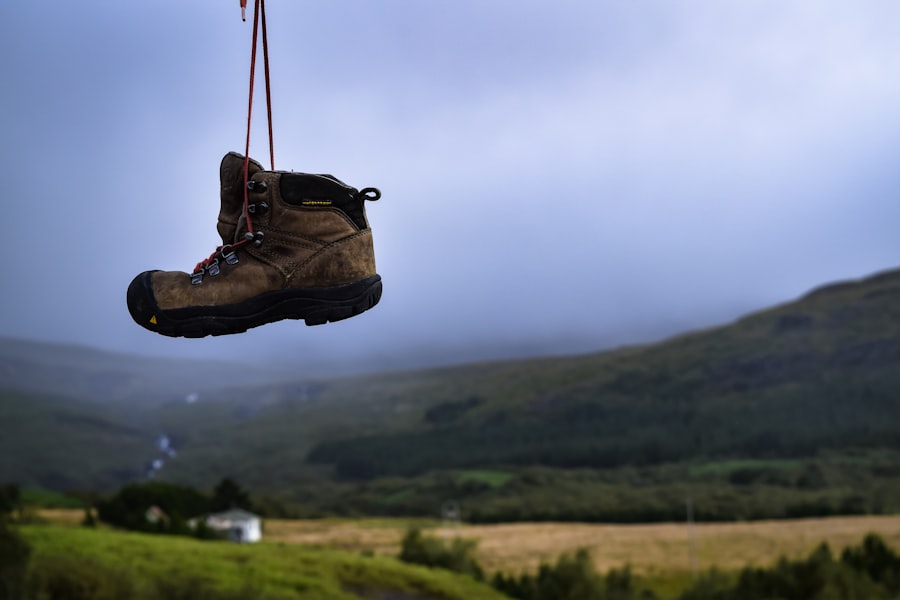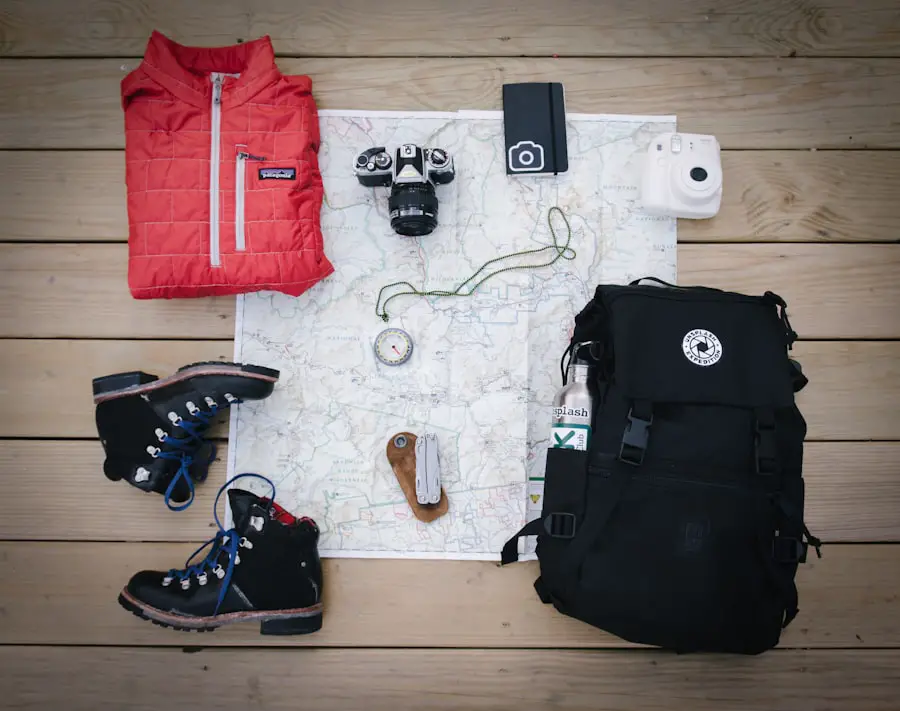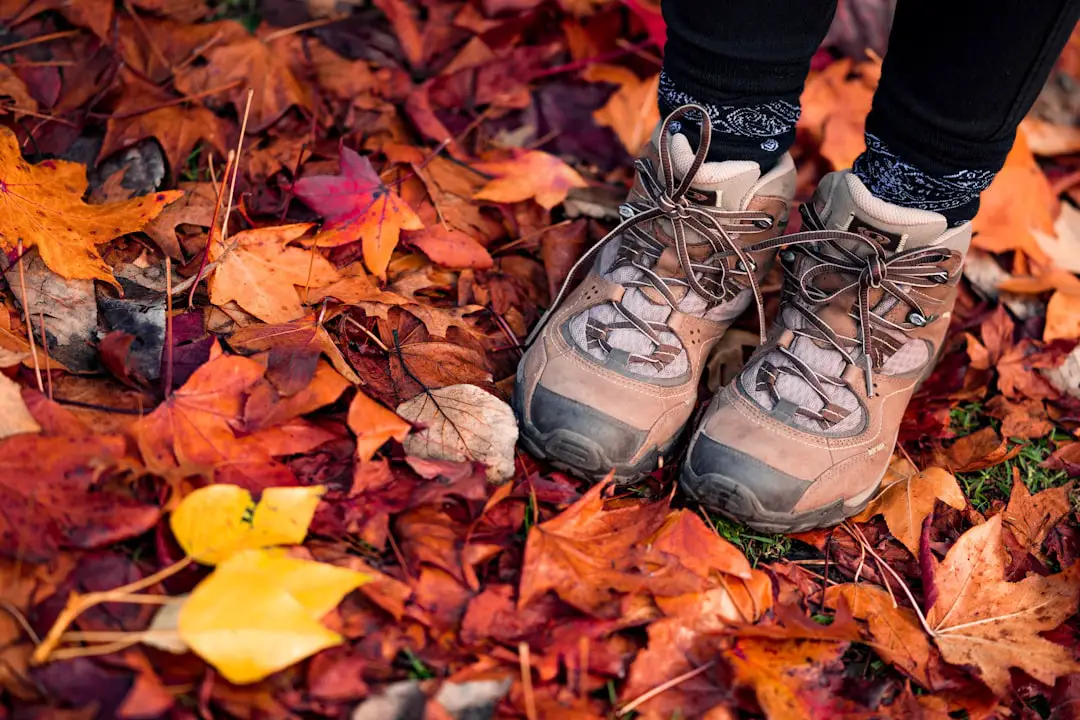Selecting the appropriate trail is a fundamental step in ensuring a successful hiking experience. The choice of trail can significantly influence not only the enjoyment of the hike but also the safety and feasibility of the journey. Factors such as difficulty level, length, terrain, and elevation gain must be carefully considered.
For instance, a beginner hiker might opt for a well-marked, relatively flat trail that offers scenic views without the added challenge of steep inclines or rocky paths. Conversely, seasoned hikers may seek out more demanding trails that test their endurance and skills, such as those found in mountainous regions or national parks. In addition to personal skill levels, it is essential to consider the trail’s conditions and accessibility.
Some trails may be closed due to seasonal weather changes or maintenance work, while others might be prone to mudslides or flooding after heavy rains. Researching recent trail reports or checking with local hiking organizations can provide valuable insights into current conditions. Furthermore, understanding the trail’s popularity can help in planning the hike; less-traveled paths may offer solitude and a chance to connect with nature, while busier trails might provide opportunities for social interaction and shared experiences with fellow hikers.
Key Takeaways
- Choose a trail that matches your skill level and experience to ensure a safe and enjoyable hike.
- Pack essential items such as water, food, navigation tools, first aid kit, and appropriate clothing for the weather conditions.
- Check the weather forecast before heading out to prepare for any potential changes in weather during your hike.
- Condition and train your body to handle the physical demands of the trail to prevent injuries and fatigue.
- Plan for emergencies by carrying a communication device, informing someone of your itinerary, and knowing basic first aid skills.
Packing the Essentials
Once the trail has been chosen, the next step is to pack the essentials for the hike. The right gear can make a significant difference in comfort and safety during the journey. A sturdy pair of hiking boots is paramount; they should provide adequate support and traction to navigate various terrains.
Additionally, moisture-wicking clothing is advisable to keep the body dry and comfortable, especially during strenuous activities. Layering is a practical approach, allowing hikers to adjust their clothing according to changing temperatures throughout the day. Beyond clothing and footwear, it is crucial to pack sufficient food and water.
Hydration is vital, particularly on longer hikes where dehydration can lead to fatigue and impaired judgment. A general rule of thumb is to drink about half a liter of water for every hour of moderate activity. Nutrient-dense snacks such as trail mix, energy bars, or jerky can help maintain energy levels.
Moreover, carrying a first-aid kit is essential for addressing minor injuries or ailments that may arise during the hike. This kit should include items like adhesive bandages, antiseptic wipes, pain relievers, and any personal medications.
Checking the Weather

Before embarking on a hiking adventure, checking the weather forecast is an indispensable step that can greatly impact the experience. Weather conditions can change rapidly in mountainous or remote areas, making it crucial to be prepared for various scenarios. A sunny forecast may quickly turn into rain or even snow, depending on the elevation and time of year.
Understanding these potential changes allows hikers to dress appropriately and pack necessary gear such as rain jackets or extra layers. In addition to temperature and precipitation forecasts, it is wise to consider wind conditions and visibility. High winds can make hiking more challenging and even dangerous, particularly on exposed ridges or summits.
Low visibility due to fog or heavy rain can lead to disorientation and increase the risk of accidents. By staying informed about weather patterns and being flexible with plans, hikers can ensure a safer and more enjoyable experience on the trail.
Conditioning and Training
| Metrics | Values |
|---|---|
| Cardiovascular Endurance | 8 minutes running |
| Strength Training | 3 sets of 10 reps |
| Flexibility | Touching toes |
| Balance | 30 seconds on one leg |
Physical conditioning is a critical aspect of preparing for a hike, especially if tackling more challenging trails. Building endurance through regular cardiovascular exercise can enhance stamina and overall performance on the trail. Activities such as running, cycling, or swimming can improve cardiovascular health and prepare the body for prolonged physical exertion.
Additionally, strength training focusing on core stability and leg muscles can help prevent injuries and improve balance while navigating uneven terrain. Incorporating practice hikes into training routines is also beneficial. Gradually increasing distance and elevation during these practice hikes allows individuals to acclimate to the physical demands of hiking.
It also provides an opportunity to test gear and make adjustments as needed. For example, if blisters develop during practice hikes, it may indicate that different socks or footwear are necessary. This preparation not only builds physical strength but also boosts confidence in one’s ability to tackle the chosen trail.
Planning for Emergencies
Despite thorough preparation, emergencies can still occur while hiking. Therefore, having a solid plan in place is essential for ensuring safety in unexpected situations. One of the first steps in emergency planning is informing someone about your hiking itinerary, including expected return times.
This way, if something goes awry, someone will know where to look for you. Additionally, carrying a map and compass or a GPS device can be invaluable in case of disorientation or getting lost. Familiarizing oneself with navigation techniques is equally important; knowing how to read a map and use a compass can be lifesaving skills in remote areas where cell service may be unreliable.
Furthermore, hikers should consider carrying a whistle or signaling device that can attract attention in case of an emergency situation.
Understanding Leave No Trace Principles

The Leave No Trace principles are essential guidelines for minimizing human impact on natural environments while enjoying outdoor activities like hiking. These principles advocate for responsible recreation by promoting practices that protect ecosystems and preserve natural beauty for future generations. One of the core tenets is to plan ahead and prepare; this includes understanding regulations for specific areas and ensuring that all gear is suitable for minimizing environmental impact.
Another critical principle is to stay on designated trails whenever possible. Straying off established paths can lead to soil erosion and damage to native vegetation. Additionally, hikers should practice proper waste disposal by packing out all trash and leftover food items.
This not only keeps trails clean but also prevents wildlife from becoming dependent on human food sources. By adhering to these principles, hikers contribute to the preservation of natural spaces while enjoying their outdoor adventures.
Familiarizing Yourself with the Area
Understanding the area where you plan to hike is crucial for both safety and enjoyment. This includes researching local flora and fauna, as well as any potential hazards that may exist along the trail. For instance, knowing about wildlife encounters—such as bears or snakes—can help hikers prepare adequately by carrying bear spray or learning how to react in case of an encounter.
Additionally, familiarizing oneself with local regulations regarding camping, fires, and other activities can prevent unintentional violations that could lead to fines or other consequences. Many parks have specific rules designed to protect both visitors and wildlife; being aware of these regulations enhances the overall experience by fostering respect for nature and its inhabitants.
Setting Realistic Expectations
Setting realistic expectations before hitting the trail is vital for ensuring a positive hiking experience. It’s important to assess personal fitness levels honestly and choose trails that align with those capabilities rather than attempting overly ambitious hikes that could lead to frustration or injury. Understanding that not every hike will result in reaching a summit or completing a long-distance trek allows hikers to appreciate the journey itself rather than focusing solely on outcomes.
Moreover, being flexible with plans can enhance enjoyment during hikes. Weather changes or unexpected obstacles may require adjustments; embracing these changes rather than resisting them can lead to discovering new paths or hidden gems along the way. Ultimately, approaching hiking with an open mind fosters a deeper connection with nature and creates lasting memories that go beyond mere physical achievements on the trail.
If you are planning a hiking trip, it is important to make sure you have the right gear and equipment. One essential item to consider is the best carry-on luggage for international travel, which can make your journey much smoother and more convenient. Check out this article on the best carry-on luggage for international travel to find the perfect bag for your upcoming adventure. Additionally, you may also want to explore other helpful travel tips and recommendations on TakeTravelInfo.com to ensure you are fully prepared for your hiking trip.
Love travel? Join Our Facebook Community
FAQs
What should I pack for a hiking trip?
When preparing for a hiking trip, it’s important to pack essential items such as a map, compass, first aid kit, water, food, appropriate clothing, sturdy footwear, and a backpack to carry everything. Additionally, consider bringing a multi-tool, sunscreen, insect repellent, and a flashlight.
How should I physically prepare for a hiking trip?
To prepare for a hiking trip, it’s important to build up your physical endurance and strength. Start by incorporating regular cardio and strength training exercises into your routine. Gradually increase the intensity and duration of your workouts to build stamina and muscle strength.
What safety precautions should I take before going on a hiking trip?
Before embarking on a hiking trip, it’s important to research the trail and weather conditions, inform someone of your plans, and check for any trail closures or alerts. Additionally, make sure to bring a map and compass, stay on designated trails, and be aware of wildlife and potential hazards.
How can I mentally prepare for a hiking trip?
Mental preparation for a hiking trip involves familiarizing yourself with the trail, setting realistic goals, and being prepared for unexpected challenges. It’s also important to stay positive, be mindful of your surroundings, and practice mindfulness and relaxation techniques to stay calm and focused during the hike.
What should I do to minimize my impact on the environment while hiking?
To minimize your impact on the environment while hiking, follow Leave No Trace principles such as packing out all trash, staying on designated trails, respecting wildlife, and avoiding damaging vegetation. Additionally, be mindful of noise levels and considerate of other hikers.
